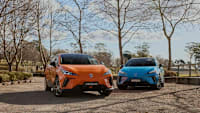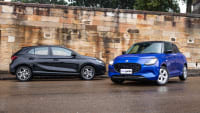What is the darkest legal window tint Australia?
Generally speaking, tinting laws in Australia are very similar in every state but the darkest legal tint accepted Australia-wide it 35 per cent VLT on front side windows, and 20 per cent VLT on any windows behind the driver.
VLT stands for ‘visible light transmission’ or how much light can get through the tinting foil.
Why would you bother getting your windows tinted?
There are a few reasons why a darker window tint is a good addition for your vehicle. The most obvious reason is it reduces the amount of heat, glare and UV rays within the cabin, making it easier to keep cool and protected during the hot summer months.
The second reason is privacy, a darker window tint makes it more difficult to see into the cabin, at your passengers and your gear! Offering a tad more ‘impulse’ protection from would be thieves or looky-loos.
The third reason is because it more often than not improves the exterior styling of the vehicle, making it appear more aesthetically appealing.
.jpg)
What’s the difference between factory and after-market tinting?
Factory window tinting is what happens prior to the vehicle hitting the market. During this process, Australian federal law dictates that the darkest legal tint for Aussie car windows is 70 per cent VLT (which blocks 30 per cent of total light from coming through).
That means the remaining five per cent allowable for the darkest legal tint may not be able to be applied as an after-market product.
After-market tinting is exactly what it sounds like, tinting that occurs after the vehicle has hit the market. This is usually applied by window tinting specialists for extra cost.
Some ‘specialists’ are better than others and it's easy to spot the end result of a bad job. Think bubbling and crackling tints!
![(image: mynrma.com.au)]() (image: mynrma.com.au)
(image: mynrma.com.au)
.jpg)
State by state, how dark can window tint be?
It’s easiest if we break down the data by what tint is allowed on what window. In all states but Tasmania, there is no window tinting allowed for the front windshield. However, you are allowed to tint the top 10 per cent of the window, or above the windshield wipers.
The darkest legal tint Qld
Front windshield: No tint allowed.
Rear windshield: 20 per cent VLT allowed.
Front side windows: 35 per cent VLT allowed.
Rear side windows: 20 per cent VLT allowed.
The darkest legal tint NSW
Front windshield: No tint allowed.
Rear windshield: 20 per cent VLT allowed.
Front side windows: 35 per cent VLT allowed.
Rear side windows: 20 per cent VLT allowed.
The darkest legal tint WA
Front windshield: No tint allowed.
Rear windshield: 20 per cent VLT allowed.
Front side windows: 35 per cent VLT allowed.
Rear side windows: 20 per cent VLT allowed.
The darkest legal tint Vic
Front windshield: No tint allowed.
Rear windshield: 20 per cent VLT allowed.
Front side windows: 35 per cent VLT allowed.
Rear side windows: 20 per cent VLT allowed.
The darkest legal tint SA
Front windshield: No tint allowed.
Rear windshield: 20 per cent VLT allowed.
Front side windows: 35 per cent VLT allowed.
Rear side windows: 20 per cent VLT allowed.
The darkest legal tint Tas
Front windshield: 70 per cent VLT allowed.
Rear windshield: 20 per cent VLT allowed.
Front side windows: 35 per cent VLT allowed.
Rear side windows: 20 per cent VLT allowed.
The darkest legal tint NT
Front windshield: No tint allowed.
Rear windshield: 15 per cent VLT allowed.
Front side windows: 35 per cent VLT allowed.
Rear side windows: 15 per cent VLT allowed.








.jpg)



.jpg)
.jpg)

.jpg)








.jpg)

.jpg)


.jpg)